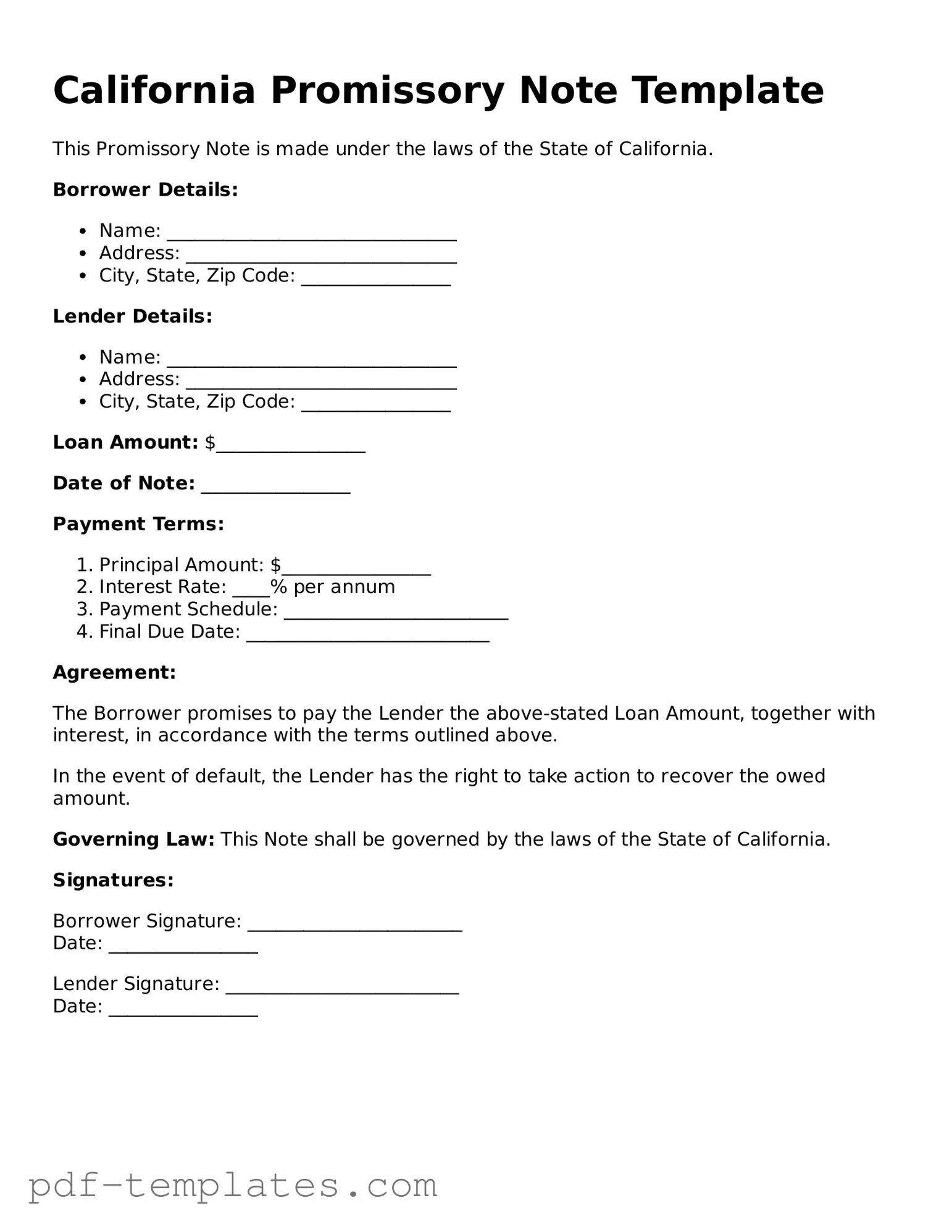A California Promissory Note is similar to a Loan Agreement. Both documents outline the terms of a loan, including the amount borrowed, interest rate, and repayment schedule. However, while a promissory note is a simpler, more straightforward document that focuses primarily on the promise to repay, a loan agreement often includes additional terms and conditions, such as collateral requirements and default clauses. This makes a loan agreement more comprehensive, providing both parties with a clearer understanding of their rights and obligations.
Another document that shares similarities with a California Promissory Note is a Mortgage. A mortgage is a specific type of loan secured by real property. Like a promissory note, it includes the terms of repayment and the amount borrowed. However, a mortgage also involves a legal claim against the property, which means that if the borrower fails to repay, the lender can take possession of the property. This added layer of security distinguishes mortgages from standard promissory notes, which may not involve collateral.
Understanding the importance of a Power of Attorney for a Child can ensure that your child's needs are met in emergencies or unforeseen situations when primary caregivers are unavailable.
A Deed of Trust is also akin to a California Promissory Note. In fact, a deed of trust is often used in conjunction with a promissory note when real estate is involved. Similar to a mortgage, a deed of trust secures the loan with property. The borrower (trustor) conveys the property to a third party (trustee) until the loan is paid off. This document outlines the same basic repayment terms as a promissory note but adds the layer of a trustee to facilitate the loan process and protect the lender's interests.
Additionally, an IOU can be compared to a California Promissory Note. An IOU is a simple acknowledgment of a debt, often less formal than a promissory note. While both documents recognize that money is owed, an IOU typically lacks detailed repayment terms and conditions. It serves as a basic reminder of the debt, whereas a promissory note provides a more structured approach, including specifics on interest rates and payment schedules.
Lastly, a Credit Agreement is similar to a California Promissory Note in that both involve borrowing funds. A credit agreement is often used in business transactions and can cover multiple loans or credit lines. Like a promissory note, it outlines the terms of borrowing, but it can be much more complex, detailing various fees, covenants, and conditions that the borrower must adhere to. This makes credit agreements more suited for larger or ongoing borrowing needs compared to the straightforward nature of a promissory note.
